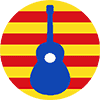History of Rumba Catalana
4. Catalan-Andalusian Music Merges with Rhumba, Puerto Rican and Cuban Rhythms
Catalan-Andalusian Music, Puerto Rican and Cuban Rhythms
A stroke of genius turns Gipsy music into a popular music genre
Let us specify that the Gypsy or Catalan rumba has little to do with the Cuban rumba. It was then a convenient label, any music that was danceable and came from Latin America was often labeled “rumba“. A bit like the term “salsa” today, which, beyond the musical genre born in New York in the 1960s, has become a commercial concept easy to assimilate for a neophyte public.
In the context of the time, however, the choice of the name rumba was relevant, in the sense that it facilitated by analogy the popularity of a new genre that generated – and continues to generate – many musical nuggets. The Catalan Xavier Cugat‘s rhumba had shown the way. The recipe would work yet another time, minus the “H”. (Although an early vinyl album of Peret, one the the founders of the genre, is called “Gipsy Rhumba” – 1969).
The modern Gypsy rumba genre is therefore based on a fusion of Catalan-Andalusian songs with rhythmic elements taken from the greatest hits of Xavier Cugat as well as of Cuban and Puerto Rican music of the time, freely inspired by their motifs son, mambo, cha cha chà, guaracha, bomba, etc, and yes, the “modern” rumba, indeed. The Catalan rumba simplified it further, evolving in a 4 beat rhythm and an irregular beat (off beat accent between beats 2 and 3) that gives it a swaying and dancing feel.
It does sound less romantic than a fabulous encounter between the noble art of flamenco and the raw power of genuine Afro-Cuban rythms, but Peret himself said his influences were Elvis Presley, Perez Prado and Xavier Cugat.
The “Catalan” label was added by Gato Perez in the second half of the 1970s.
“El Ventilador”, rumba Catalana’s secret sauce
In order to reproduce the trendy Cuban and Puerto Rican rhythms, the Spanish Catalan Gypsies, under the impulse of Peret and Antonio González “El Pescaílla” in particular, perfected a playing technique, refining the rhythmic moves of the right hand until it reached summits of syncopated virtuosity, known as the famous “ventilador“.
The right hand “ventilates”, sweeps the strings and produces a rhythm close to the effect of the Cuban güiro, combining strikes and slaps on the resonance box of the guitar.
This irresistibly danceable rhythm is the trademark of the Gypsy/Catalan rumba. The compas is often referred to as the right hand technique. There are many styles, such as the Camargue compas. The compas being the rhythm above all, basically the rhythmic structure in the flamenco genres.
“Una Lagrima”
In this respect, it should be remembered that similar rhythmic and percussive playing techniques were already well developed among the Gypsies of southern France, but decried by the Andalusian Gypsies as not being in the pure flamenco tradition. The Spanish Catalan Gypsies, close to their French cousins, understood all the interest.
On the instrumental level, atypical Catalana rumba is accompanied by the guitar, to which are often added palmas (hand clapping) and percussions – bongos, congas, small percussion instruments – and sometimes piano, wind instruments, electric bass, keyboards.
Demonstration : from Puerto Rico to Barcelona
It is a mixture of Puerto Rican bomba and plena, with a touch of Cuban mambo, very fashionable at the time.
Rumba: two familiar syllables, synonymous with partying and dancing (the label “Catalana” will come later). No need for explanations.The result is rather nice.

